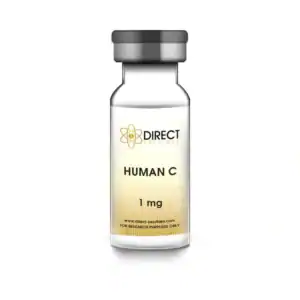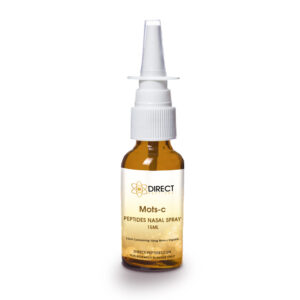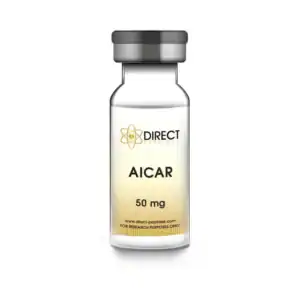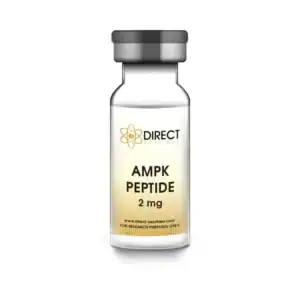Scientists are always working to understand small but important molecules in the body. One of these is Human C-Peptide, a molecule made with insulin during proinsulin cleavage in the pancreas. In the past, researchers underestimated its importance.
However, this peptide is now seen as very valuable in research. It is especially important for studying its link to insulin and how it might help with new treatments. There is much to learn about this fascinating molecule, so let’s explore it further.
C-peptide plays a crucial role in the body by helping to regulate blood sugar levels. It is released in equal amounts to insulin during the production process. C-peptide serves as a marker for monitoring insulin production in individuals with diabetes and can provide insights into their pancreatic function.
The peptide is tied closely to insulin secretion, and both are made at the same time in the pancreas. When researchers measure this molecule in a blood sample, they can learn how much insulin the body produces. This is very important for managing diabetes mellitus.
Having either too little or too much insulin can lead to problems, such as low blood sugar. Blood tests help researchers explore treatments for conditions like latent autoimmune diabetes (LADA). Results from samples processed in different laboratories are used to set normal value ranges, which improve the accuracy of diagnostics.
Direct Peptides Europe offers high quality Human C Peptide for sale online.
This peptide is important for distinguishing between type 1 diabetes and type 2 diabetes. For research purposes, a blood glucose test may show that the levels of this peptide are reduced or absent in type 1 diabetes. This can mean that the body is not making enough insulin.
These results are often linked to the autoimmune destruction of beta cells. In type 2 diabetes, however, different measurements of the peptide usually reflect insulin resistance. This provides researchers with helpful information about treatment options.
Studies have shown that replacement therapy with this peptide might help with problems such as urinary albumin excretion, peripheral neuropathy, and diabetic nephropathy. These findings highlight how important it is for addressing gaps in diabetes research. The structure of the peptide includes disulfide bonds and amino acids, which make it biologically active and of great interest to scientists.
C-Peptide plays a nuanced role in cardiovascular health. Elevated levels may indicate risks like coronary artery disease, while low levels contribute to poor endothelial function. Moderate levels of this peptide may mitigate oxidative stress and support vascular health, particularly in diabetes mellitus studies. Insights gained from small amounts of blood drawn from veins reveal its impact on the bloodstream and related complications.
Similarly, diabetic nephropathy is a major complication of poorly managed blood glucose levels. Research highlights that restoring C-Peptide levels improves blood flow and cell survival in the kidneys. These findings reveal potential for reducing urinary albumin excretion and kidney damage. Researchers often work with serum, plasma, or urine samples to analyze the peptide’s effects on renal function. Milliliter (ml) measurements are frequently used to ensure precision in laboratory environments.
AICAR (5-aminoimidazole-4-carboxamide ribonucleotide) is an activator of AMPK (adenosine monophosphate-activated protein kinase) pathways. These pathways are important for how cells manage energy. AICAR works by mimicking the effects of exercise at the cellular level. This makes it useful in metabolic research.
It helps improve energy metabolism and shows promise for treating conditions like obesity, insulin resistance, and type 2 diabetes. AICAR also enhances mitochondrial function, which is key for energy regulation in cells. Researchers continue to study how this molecule works under different conditions.
To explore this product further, please visit the AICAR category page.
MOTS-C is a peptide that comes from mitochondria and has a key role in metabolic research. It helps regulate insulin sensitivity and glucose metabolism.
These are important for understanding metabolic disorders. MOTS-C works through unique pathways.
It influences mitochondrial energy production and stress responses, which are vital for keeping cells healthy.
Researchers study MOTS-C to understand how it might improve glucose regulation and fix metabolic problems. Its unique features make it an exciting topic in research on energy balance and metabolic health.
For additional details, visit the MOTS-C category page.
AMPK is a key regulator of how cells use energy. It helps maintain metabolic health by activating pathways that make energy use more efficient. AMPK is an important focus in research on diabetes, aging, and obesity. It interacts with molecules like AICAR and peptides such as C-Peptide. These interactions give insights into how cells repair damage and lower oxidative stress.
AMPK’s role in managing energy and keeping cells healthy makes it essential for studying long-term metabolic issues. Researchers use AMPK to explore metabolic pathways and to create new solutions for these problems.
Learn more by visiting the AMPK category page.
The journey of Human C-Peptide shows its strong potential in research. It plays an important role in insulin secretion and is used in cardiovascular, renal, and neurological studies. This peptide is helping researchers better understand metabolic and therapeutic challenges.
It works alongside molecules like AICAR and MOTS-C, which create new chances for innovative studies. While its use is only for research, continued exploration gives hope for breakthroughs. These studies aim to improve the understanding of diabetes mellitus and related conditions, offering a bright future for progress in this field.
1 Harnishsingh B, Rama B. Is C-peptide a predictor of severity of coronary artery disease in metabolic syndrome? An observational study. Indian Heart J. 2018 Dec;70 Suppl 3(Suppl 3):S105-S109.
2 Bhatt MP, Lim YC, Hwang J, Na S, Kim YM, Ha KS. C-peptide prevents hyperglycemia-induced endothelial apoptosis through inhibition of reactive oxygen species-mediated transglutaminase 2 activation. Diabetes. 2013 Jan;62(1):243-53.
3 Yaribeygi H, Maleki M, Sathyapalan T, Sahebkar A. The effect of C-peptide on diabetic nephropathy: A review of molecular mechanisms. Life Sci. 2019 Nov 15;237:116950.
4 Sima AA. C-peptide and diabetic neuropathy. Expert Opin Investig Drugs. 2003 Sep;12(9):1471-88.
5 Saisho Y. Postprandial C-Peptide to Glucose Ratio as a Marker of β Cell Function: Implication for the Management of Type 2 Diabetes. Int J Mol Sci. 2016 May 17;17(5):744.
Buy Peptides Vials online from Direct Peptides Europe, a trusted global supplier of premiium research peptides.

Human C Peptide Vial
£25.71 – £32.51Price range: £25.71 through £32.51 Select options This product has multiple variants. The options may be chosen on the product page
Mots-C Nasal Spray
£37.79 – £70.58Price range: £37.79 through £70.58 Select options This product has multiple variants. The options may be chosen on the product page
AICAR Peptide Vial
£27.08 – £36.06Price range: £27.08 through £36.06 Select options This product has multiple variants. The options may be chosen on the product page
AMPK Peptide Vial
£17.84 – £98.81Price range: £17.84 through £98.81 Select options This product has multiple variants. The options may be chosen on the product pageALL CONTENT AND PRODUCT INFORMATION AVAILABLE ON THIS WEBSITE IS FOR EDUCATIONAL PURPOSES ONLY.
DISCLAIMER: These products are intended solely as a research chemical only. This classification allows for their use only for research development and laboratory studies. The information available on our Europe Direct Peptides website: https://direct-peptides.com is provided for educational purposes only. These products are not for human or animal use or consumption in any manner. Handling of these products should be limited to suitably qualified professionals. They are not to be classified as a drug, food, cosmetic, or medicinal product and must not be mislabelled or used as such.